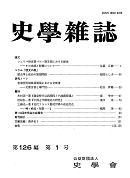All issues

Volume 125, Issue 11
Displaying 1-4 of 4 articles from this issue
- |<
- <
- 1
- >
- >|
-
2016 Volume 125 Issue 11 Pages Cover1-
Published: 2016
Released on J-STAGE: January 09, 2018
JOURNAL FREE ACCESSDownload PDF (26K) -
International lawyers' views on the 1901 Consular Convention between the Ottoman Empire and GreeceNobuyoshi FUJINAMI2016 Volume 125 Issue 11 Pages 1-36
Published: 2016
Released on J-STAGE: January 28, 2018
JOURNAL FREE ACCESSIn the 1901 Consular Convention between the Ottoman Empire and Greece, a product of arbitration conducted by the Six Great European Powers, we find many key elements of nineteenth-century international law, such as intervention, arbitration and the Capitulations. In this article, by examining the works of four prominent Ottoman and Greek international lawyers, namely, Nicolas Politis, Georgios Streit, Hasan Fehmi and İbrahim Hakkı, the author analyzes some of the historical as well as ideological frameworks within which nineteenth-century international jurists operated. The bone of contention within the Consular Convention arbitration lay in the character of the Capitulations. For the Greeks, “European public law” dictated that Christian states discriminate against “semi-barbarous” states like the Ottoman Empire; thereby, Greece, as a civilized Christian state, had a natural right to enjoy the same privileges as the Great Powers. In turn, the Great Powers arbitrated the case in favor of the Greeks, so as to affect the manner in which they would deal with the Capitulations regime as a whole. On the other side, the Ottoman jurists demanded equal treatment between the Ottoman Empire and Greece, arguing that the “general principle of international law” necessitated respect for the sovereign rights of every state regardless of race or creed. The Capitulations, argued the Ottomans, deviated greatly from this rule of egalitarianism by granting “unjust” privileges to the Great Powers. At the same time, the Ottomans did not lose faith in international law and its universality, while condemning Western imperialism. In the end, despite the European ideal of secular and universal international law which transcended the borders of Europe, in actual practice, Christian chauvinism continued to dominate the ideas of the nineteenth-century European international lawyers, as shown by their treatment of the Ottoman Muslims, whose presence in Europe became time and again the acid test for to what extent international law really was universal.View full abstractDownload PDF (3374K) -
Concerning the concept of a Hashiba government regimeHiroshi NAKAMURA2016 Volume 125 Issue 11 Pages 40-64
Published: 2016
Released on J-STAGE: January 28, 2018
JOURNAL FREE ACCESSThe present article is an attempt to clarify the relationship of the Hashiba (later Toyotomi) Hideyoshi government regime to the imperial court in Kyoto and the basic ideas behind the Hashiba regime through a reexamination of a series of studies published by Uchida Kusuo during 1988 and 89 on the move of the Hashiba seat of government to Osaka. It was shortly after his victory at the battle of Shizugatake in the 4th month Tensho 11 (1583) that Hideyoshi, who had thus emerged as the successor to Oda Nobunaga, began the construction of a new castle in Osaka, at which time, according Uchida's research, he decided to move the capital to Osaka from Kyoto and establish a warrior government (bakufu) with himself as the new shogun. However, due to his failure to persuade the imperial court to move from Kyoto to Osaka, he abandoned his plans for the new shogunate and instead took the court title of Regent (Kanpaku) and built Jurakudai, his official residence in the capital. This Osaka relocation hypothesis drew a lot of interest from early on and is even supported by many historians today; however, it has yet to be empirically confirmed. Moreover, in the current research literature dealing with the relationship between the Hashiba regime and the imperial court, Uchida's findings have tended to be disregarded. This is indeed a truly strange state of affairs, given the fact that an argument proposing the existence of a scheme to move the capital to Osaka while setting up a new bakufu there, thus seriously impacting the relationship between Hideyoshi and the emperor, would be ignored as an important topic on the workings of the imperial (tenno) institution during the transition from medieval to late premodern politics and society. Over a quarter of a century, not only has the Osaka relocation hypothesis not been empirically confirmed, but it has existed on a separate parallel track beside the research on the warrior-aristocrat governance structure of the time in question. In this article, the author closely examines all of the primary source materials related to the Osaka relocation hypothesis and is able to finally put to rest the move to Osaka and the establishment of a new shogunate there as untenable. Based on these findings, the author then dissects the work of Yokota Fuyuhiko, who has attempted to trace Hideyoshi's plan of action from his failed plans for a move to Osaka to his establishment of a Kanpaku regency in Kyoto. To begin with, Yokota presents no plausible explanation of why Hideyoshi abandoned his plans to move the capital, and concerning the defeat at the battle of Komaki-Nagakute (1584), which he cites as the main reason, Hideyoshi's plan for a new warrior-aristocrat governance mechanism headed by him as Kanpaku regent predated the long, drawn out 3-month long peace process at Komaki-Nagakute and should be looked upon as more proactive political maneuver. The author concludes that based on the findings contained in this article, there is no necessity for having to come to terms with a plan by Hideyoshi to move the capital to Osaka and its failure in any historical analysis of the period in question.View full abstractDownload PDF (3245K) -
2016 Volume 125 Issue 11 Pages Cover2-
Published: 2016
Released on J-STAGE: January 09, 2018
JOURNAL FREE ACCESSDownload PDF (33K)
- |<
- <
- 1
- >
- >|